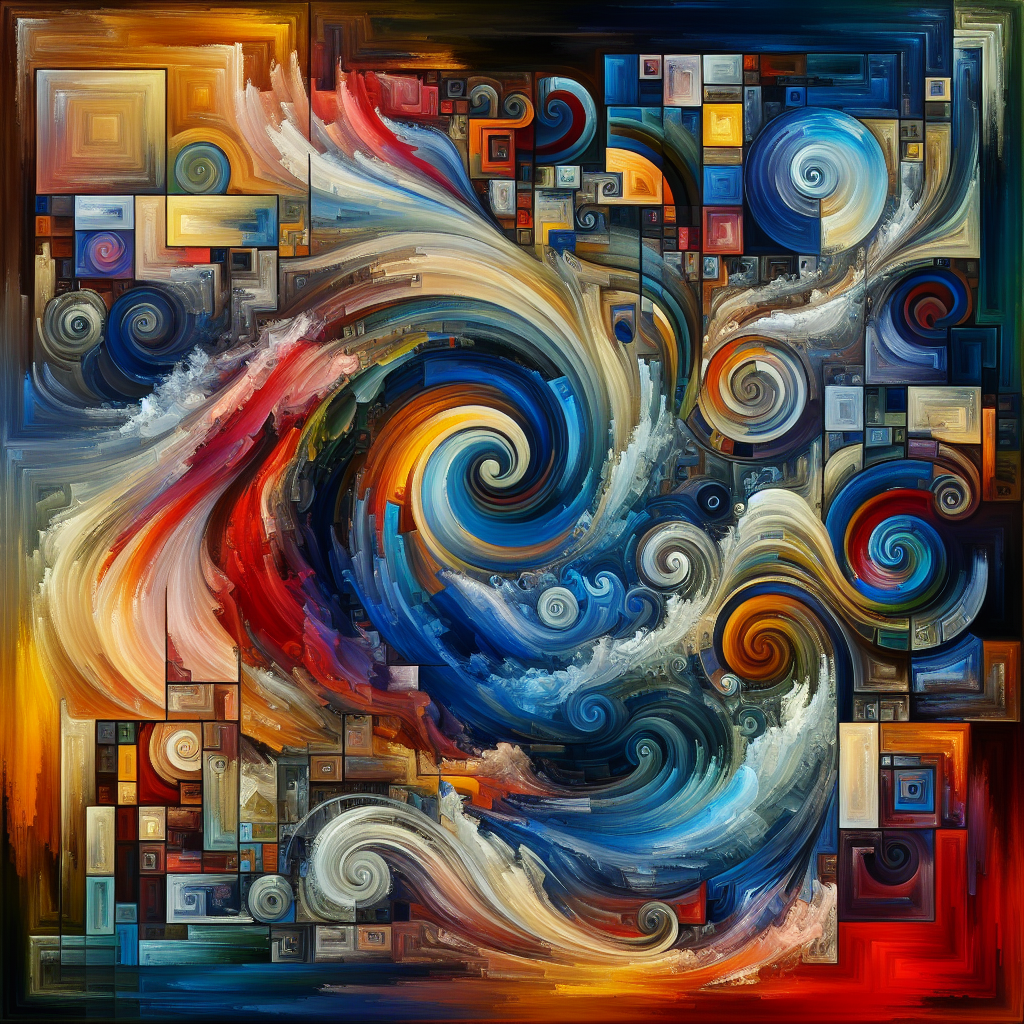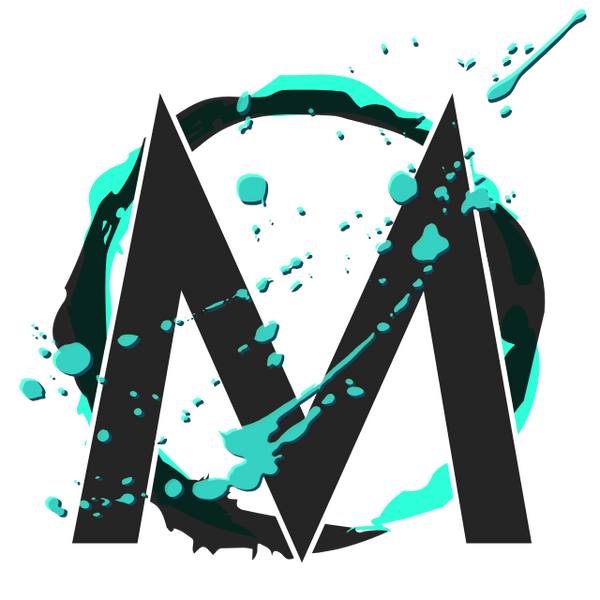Discover the Beauty of Abstract Paintings!
Abstract paintings have long captivated audiences with their ability to convey complex emotions and ideas through non-representational forms. Unlike traditional art that depicts realistic scenes, abstract art thrives on the artist's ability to use colors, shapes, and textures to create a visual language that speaks directly to the viewer's soul. This unique form of expression allows for a multitude of interpretations, making each piece a personal and intimate experience for the observer.
The origins of abstract art date back to the early 20th century, with pioneers like Wassily Kandinsky and Piet Mondrian leading the movement. They broke away from conventional artistic norms to explore the endless possibilities of form and color. Today, abstract paintings continue to evolve, incorporating modern techniques and materials to create stunning, contemporary masterpieces.
At Modern Elements Metal Art, we embrace this rich history while infusing our own modern sensibilities. Our founder, Christopher Henderson, leverages his engineering and metal fabrication background to craft unique, metal-based abstract artworks that not only adorn spaces but also evoke deep emotional responses. Explore handcrafted modern art by metal artist Christopher Henderson on our website and discover how abstract paintings can transform your space.
History and Evolution of Abstract Art

The history of abstract art is a fascinating journey through the evolution of artistic expression. The roots of abstract art can be traced back to the late 19th and early 20th centuries, an era marked by rapid social and technological changes. Artists began to challenge traditional perspectives and sought new ways to represent the complexities of modern life. This quest for innovation led to the birth of abstract art, a movement that would redefine the boundaries of visual art.
One of the earliest and most influential figures in the development of abstract art was Wassily Kandinsky. Often regarded as the father of abstract painting, Kandinsky's work focused on the emotional and spiritual aspects of art. He believed that colors and forms could evoke feelings and ideas, independent of any recognizable subject matter. His groundbreaking works laid the foundation for future abstract artists.
Another pivotal figure was Piet Mondrian, whose geometric compositions and use of primary colors became iconic. Mondrian's work was deeply influenced by his philosophical beliefs and his desire to express universal harmony through art. His style, known as De Stijl, emphasized simplicity and order, and it had a profound impact on subsequent generations of artists.
Throughout the 20th century, abstract art continued to evolve, absorbing influences from various movements such as Cubism, Surrealism, and Abstract Expressionism. Each wave of artists brought new techniques and perspectives, enriching the abstract art landscape. Today, abstract art remains a dynamic and ever-changing field, continually pushing the boundaries of creativity and interpretation.
Key Characteristics of Abstract Paintings

Abstract paintings are known for their unique and diverse characteristics that set them apart from other art forms. Unlike traditional paintings that depict recognizable subjects, abstract art focuses on the use of shapes, colors, and forms to convey meaning and evoke emotions. Here are some key characteristics that define abstract paintings:
- Non-representational: Abstract paintings often do not represent specific objects or scenes from the real world. Instead, they explore concepts, emotions, and ideas through visual elements.
- Emphasis on Color: Color plays a crucial role in abstract art. Artists use vibrant and contrasting colors to create mood, depth, and movement within the composition. The choice of colors can evoke different emotions and reactions from the viewer.
- Geometric and Organic Shapes: Abstract paintings frequently feature a mix of geometric shapes (like squares, circles, and triangles) and organic forms (irregular, free-flowing shapes). These elements contribute to the overall balance and harmony of the artwork.
- Texture and Technique: The texture of an abstract painting can vary greatly, depending on the techniques used by the artist. Techniques such as layering, scraping, and dripping paint can create rich, tactile surfaces that add depth and interest to the artwork.
- Focus on Composition: The arrangement of visual elements within an abstract painting is critical. Artists carefully consider the placement of shapes, lines, and colors to achieve a balanced and dynamic composition.
- Subjective Interpretation: One of the most captivating aspects of abstract paintings is their openness to interpretation. Each viewer may see and feel something different, making the experience highly personal and unique.
By embracing these characteristics, abstract paintings offer a rich and varied visual experience that invites viewers to explore their own perceptions and emotions.
Emotional Impact of Abstract Art

The emotional impact of abstract art is profound and multifaceted, often transcending the limitations of language and straightforward representation. Unlike traditional art forms that rely on recognizable imagery, abstract paintings engage the viewer on a deeper, more intuitive level, making the emotional response highly subjective and personal.
Color and Form: One of the most striking aspects of abstract art is its use of color and form to evoke emotions. Bold, vibrant colors can create feelings of excitement, passion, or joy, while softer, muted tones may convey calmness, melancholy, or introspection. The shapes and forms within an abstract painting also play a crucial role in eliciting an emotional response. Geometric shapes might evoke a sense of order and stability, whereas fluid, organic forms can suggest movement and freedom.
Viewer Interpretation: The absence of clear, defined subjects in abstract art allows viewers to project their own experiences, thoughts, and feelings onto the artwork. This open-ended nature means that each person’s reaction is unique, shaped by their individual psyche and experiences. For some, a particular abstract piece might bring about a sense of nostalgia or longing, while for others, it might inspire a feeling of curiosity or wonder.
Expressive Techniques: The techniques used by abstract artists also contribute significantly to the emotional impact of their work. Techniques such as layering, texturing, and dynamic brushstrokes can add depth and intensity to a piece, making the viewer feel as though they are peering into the artist’s soul. The physicality of the painting process can be evident in the final work, adding an element of raw, unfiltered emotion.
Ultimately, the emotional impact of abstract art lies in its ability to connect with viewers on a visceral level, bypassing intellectual analysis and speaking directly to the heart and soul.
Transforming Spaces with Abstract Paintings

Abstract paintings have a unique ability to transform spaces, turning ordinary rooms into extraordinary visual experiences. Their versatile nature and captivating aesthetic can dramatically alter the ambiance and perception of any setting, making them an ideal choice for both residential and commercial interiors.
Creating Focal Points: One of the most effective ways to use abstract art is to create a focal point within a room. A large, striking abstract painting can draw the eye and become the centerpiece of a space. This not only adds visual interest but also provides a conversation starter, making the room more engaging and dynamic. Whether it’s a vibrant splash of color in a minimalist living room or a sophisticated piece in a corporate lobby, abstract art can anchor the design of a space.
Enhancing Mood and Atmosphere: The colors, shapes, and textures in abstract paintings can significantly influence the mood and atmosphere of a room. Warm colors like reds, oranges, and yellows can make a space feel more inviting and energetic, while cool tones like blues and greens can create a calming, serene environment. Abstract art with intricate patterns or bold, sweeping lines can add a sense of movement and vitality, making the space feel more lively and dynamic.
Personal Expression: Incorporating abstract paintings into your space allows for a high degree of personal expression. These works of art can reflect your tastes, emotions, and experiences, making your environment uniquely yours. They can also be a form of self-expression, where the choice of artwork reveals aspects of your personality and aesthetic preferences.
Versatility and Adaptability: Abstract art is highly versatile and can complement a wide range of interior styles, from modern and contemporary to traditional and eclectic. Their non-representational nature means they can adapt to various color schemes and design elements, making them a flexible choice for any space. Additionally, abstract paintings can be easily rotated or relocated, offering endless possibilities for refreshing and reinventing your interiors.
Ultimately, abstract paintings are more than just decorative pieces; they are powerful tools for transforming spaces, enhancing moods, and expressing individuality.
Choosing the Right Abstract Artwork

Choosing the right abstract artwork for your space is both an exciting and thoughtful process. The perfect piece can elevate your environment, reflect your personal style, and evoke the desired emotions. Here are some key considerations to guide you in selecting the ideal abstract painting:
Understand Your Space: Before selecting a piece, it’s essential to understand the specifics of your space. Consider the room's size, color scheme, lighting, and existing decor. A large painting might be perfect for a spacious living room but could overwhelm a smaller area. Similarly, the colors in the artwork should complement or contrast harmoniously with your current palette to create a balanced look.
Reflect Your Personality: Abstract art is a fantastic medium for showcasing your personality and preferences. Choose pieces that resonate with you on a personal level, whether through color, form, or emotional impact. This ensures that the artwork not only enhances your space but also becomes a meaningful part of your home or office.
Consider the Emotional Impact: Different abstract paintings can evoke a wide range of emotions, from tranquility to excitement. Think about the mood you want to create in the room. Soft, muted colors and gentle shapes might promote relaxation in a bedroom, while bold, dynamic compositions could energize a living area or office space. See art in the workplace
Think About Scale and Proportion: The size of the artwork about the space is crucial. A piece that's too small might get lost, while one that's too large can dominate the room. Measure your wall space and consider the proportions to ensure the artwork fits perfectly and enhances the overall aesthetic. See our wall art size guide
Trust Your Instincts: Ultimately, the best guide in choosing abstract art is your intuition. Trust your gut feeling when you encounter a piece that speaks to you. If it captures your attention and feels right, it's likely the perfect addition to your space.
Explore handcrafted modern art by metal artist Christopher Henderson and discover unique abstract paintings that transform and elevate your surroundings. With his expertise and passion for metal art, you’re sure to find a piece that not only complements your space but also becomes a cherished heirloom.
